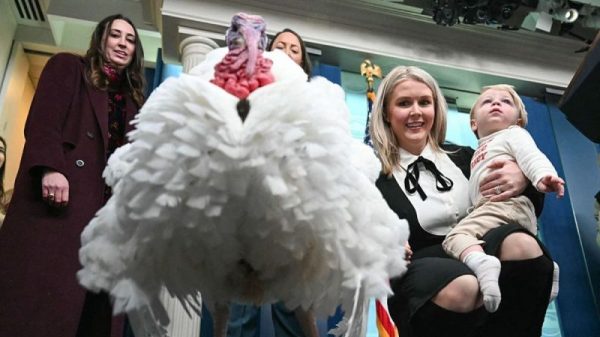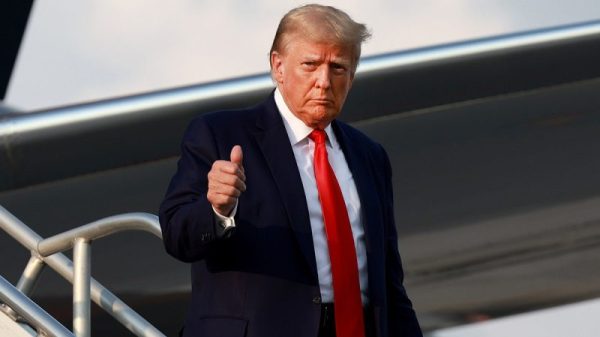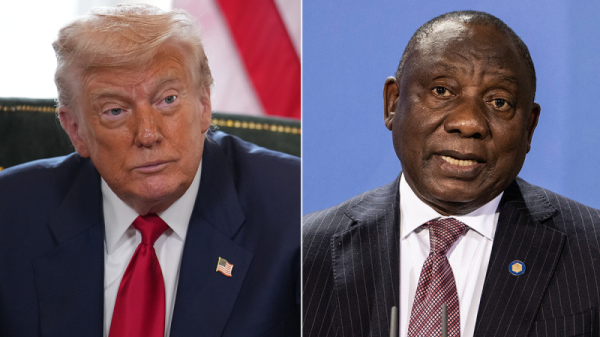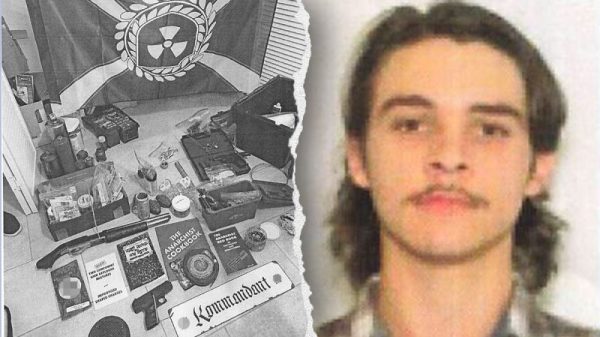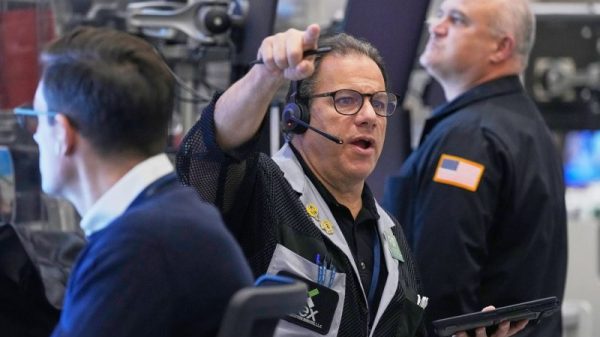The Supreme Court on a 5-4 vote Tuesday reinstated for now the Biden administration’s regulations on “ghost guns,” firearms assembled from kits without the usual serial numbers and background checks on purchasers.
The administration’s regulations, which apply to self-made weapons the same kind of licensing and record-keeping required of guns sold commercially, will remain in place while legal battles continue.
Neither the majority nor the dissenters explained their reasoning, as is common in emergency applications. But the order noted that Justices Clarence Thomas, Samuel A. Alito Jr., Neil M. Gorsuch and Brett M. Kavanaugh would have denied the government’s request.
The list of dissenters to the unsigned, one-paragraph order means that Chief Justice John G. Roberts Jr. and fellow conservative Justice Amy Coney Barrett joined liberal Justices Sonia Sotomayor, Elena Kagan and Ketanji Brown Jackson in approving the government’s plea.
A federal judge in Texas ruled in June that the Bureau of Alcohol, Tobacco, Firearms and Explosives (ATF) exceeded its authority by regulating the kits under the Gun Control Act of 1968. “The liberty interests of law-abiding citizens wishing to engage in historically lawful conduct” — building their own weapons — “outweighs the Government’s competing interest in preventing prohibited persons from unlawfully possessing firearms,” wrote U.S. District Judge Reed O’Connor in one of a series of orders halting the government rule.
The U.S. Court of Appeals for the 5th Circuit declined the government’s request to lift O’Connor’s ultimately nationwide block on the rules, and scheduled a hearing on the merits on Sept. 7. U.S. Solicitor General Elizabeth B. Prelogar asked the Supreme Court to step in and keep the regulations in place while the legal challenges continued.
O’Connor’s ruling “would allow anyone with access to the Internet to anonymously buy a parts kit or partially completed frame or receiver and easily assemble a working firearm in as little as twenty minutes,” Prelogar wrote. “And by making untraceable guns freely available to felons, minors, and other prohibited persons, it would endanger the public and thwart efforts to prevent and solve serious crimes.”
Prelogar said ATF’s rule regulating gun kits and partially assembled frames fits comfortably within Congress’s definition of a firearm as “any weapon … which will or is designed to or may readily be converted to expel a projectile by the action of an explosive.”
The fact that the parts require assembly or conversion to become a working weapon is accounted for in that language, she argued.
“If a state placed a tax on the sale of tables, chairs, couches, and bookshelves, IKEA surely could not avoid that tax by claiming that it does not sell any of those items and instead sells ‘furniture parts kits’ that must be assembled by the purchasers,” Prelogar wrote. “So too with guns: An ordinary speaker of English would recognize that a company in the business of selling kits that can be assembled into firearms in minutes — and that are designed, marketed, and used for that express purpose — is in the business of selling firearms. A contrary conclusion blinks reality.”
“Ghost guns” are becoming increasingly popular with teenagers and those whose criminal records keep them from buying guns in the marketplace. Ghost gun sales and their use in violent crimes have spiked sharply in recent years, law enforcement agencies say.
But Prelogar noted that ATF rules do not prohibit buying or selling the kits. Instead, the rules require complying with the same regulations that concern commercial gun sales, such as obtaining licenses, marking products with serial numbers, conducting background checks and keeping records to allow law enforcement to trace firearms used in crimes.
O’Connor ruled that such requirements must be imposed by Congress, and noted that ATF in the past has said gun kits and frames that require some additional work do not constitute weapons.
The Biden administration rules, in place since August 2022, were challenged in the case at the Supreme Court by two individual firearm owners, two advocacy organizations and five companies that manufacture or distribute ghost gun products.
“The Gun Control Act of 1968 reflects a fundamental policy choice by Congress to regulate the commercial market for firearms while leaving the law-abiding citizens of this Country free to exercise their right to make firearms for their own use without overbearing federal regulation,” wrote their lawyer David H. Thompson. The “commercial production and sale of other items that may be used by private citizens to make firearms for their own use is outside the scope of the Act.”
They said the label “ghost gun” is a “propaganda term” and that the justices should not accept the government’s “self-serving characterization of the supposed ‘soaring use of ghost guns in violent crimes’ and its statistics concerning the alleged increase in ‘ghost guns … recovered by law enforcement each year’ since 2017.”
Prelogar said it was the gun groups that were being misleading in relying on the fact that ATF for decades did not find authority in the law to regulate ghost guns. “There was no such thing as a ghost gun in 1968,” Prelogar wrote. “As recently as 2017, they were a novelty being sold in relatively small numbers. It is only over the last five years that the manufacturing respondents and others have dramatically changed the status quo by selling tens if not hundreds of thousands of firearms outside the Act’s regulations.”
Several lawsuits have been filed around the country to challenge ATF regulations, but O’Connor is the only judge to block their implementation. Prelogar said that was enough reason for the Supreme Court to disallow him from vacating the rules nationwide.
In effect, Prelogar wrote, “the district court below claimed a veto power over all other federal judges in the country. And the court’s nationwide vacatur has compelled the government to seek emergency relief from this Court, short-circuiting the ordinary process.”
Gun-control groups praised the court’s action. “We call on the Fifth Circuit to do the right thing and keep this vital rule intact,” David Pucino, deputy chief counsel at Giffords Law Center, said in a statement. “The challenged rule simply requires that ghost gun kits are regulated like the guns that they are.”
Gun rights groups were disappointed. “We remain optimistic that we will ultimately prevail,” said Second Amendment Foundation executive director Adam Kraut. “We believe the district court’s rationale, striking down the final rule, was legally sound and we look forward to defending our position on appeal.”
The case is Garland v. VanDerStok.
The Supreme Court on a 5-4 vote Tuesday reinstated for now the Biden administration’s regulations on “ghost guns,” firearms assembled from kits without the usual serial numbers and background checks on purchasers.
The administration’s regulations, which apply to self-made weapons the same kind of licensing and record-keeping required of guns sold commercially, will remain in place while legal battles continue.
Neither the majority nor the dissenters explained their reasoning, as is common in emergency applications. But the order noted that Justices Clarence Thomas, Samuel A. Alito Jr., Neil M. Gorsuch and Brett M. Kavanaugh would have denied the government’s request.
The list of dissenters to the unsigned, one-paragraph order means that Chief Justice John G. Roberts Jr. and fellow conservative Justice Amy Coney Barrett joined liberal Justices Sonia Sotomayor, Elena Kagan and Ketanji Brown Jackson in approving the government’s plea.
A federal judge in Texas ruled in June that the Bureau of Alcohol, Tobacco, Firearms and Explosives (ATF) exceeded its authority by regulating the kits under the Gun Control Act of 1968. “The liberty interests of law-abiding citizens wishing to engage in historically lawful conduct” — building their own weapons — “outweighs the Government’s competing interest in preventing prohibited persons from unlawfully possessing firearms,” wrote U.S. District Judge Reed O’Connor in one of a series of orders halting the government rule.
The U.S. Court of Appeals for the 5th Circuit declined the government’s request to lift O’Connor’s ultimately nationwide block on the rules, and scheduled a hearing on the merits on Sept. 7. U.S. Solicitor General Elizabeth B. Prelogar asked the Supreme Court to step in and keep the regulations in place while the legal challenges continued.
O’Connor’s ruling “would allow anyone with access to the Internet to anonymously buy a parts kit or partially completed frame or receiver and easily assemble a working firearm in as little as twenty minutes,” Prelogar wrote. “And by making untraceable guns freely available to felons, minors, and other prohibited persons, it would endanger the public and thwart efforts to prevent and solve serious crimes.”
Prelogar said ATF’s rule regulating gun kits and partially assembled frames fits comfortably within Congress’s definition of a firearm as “any weapon … which will or is designed to or may readily be converted to expel a projectile by the action of an explosive.”
The fact that the parts require assembly or conversion to become a working weapon is accounted for in that language, she argued.
“If a state placed a tax on the sale of tables, chairs, couches, and bookshelves, IKEA surely could not avoid that tax by claiming that it does not sell any of those items and instead sells ‘furniture parts kits’ that must be assembled by the purchasers,” Prelogar wrote. “So too with guns: An ordinary speaker of English would recognize that a company in the business of selling kits that can be assembled into firearms in minutes — and that are designed, marketed, and used for that express purpose — is in the business of selling firearms. A contrary conclusion blinks reality.”
“Ghost guns” are becoming increasingly popular with teenagers and those whose criminal records keep them from buying guns in the marketplace. Ghost gun sales and their use in violent crimes have spiked sharply in recent years, law enforcement agencies say.
But Prelogar noted that ATF rules do not prohibit buying or selling the kits. Instead, the rules require complying with the same regulations that concern commercial gun sales, such as obtaining licenses, marking products with serial numbers, conducting background checks and keeping records to allow law enforcement to trace firearms used in crimes.
O’Connor ruled that such requirements must be imposed by Congress, and noted that ATF in the past has said gun kits and frames that require some additional work do not constitute weapons.
The Biden administration rules, in place since August 2022, were challenged in the case at the Supreme Court by two individual firearm owners, two advocacy organizations and five companies that manufacture or distribute ghost gun products.
“The Gun Control Act of 1968 reflects a fundamental policy choice by Congress to regulate the commercial market for firearms while leaving the law-abiding citizens of this Country free to exercise their right to make firearms for their own use without overbearing federal regulation,” wrote their lawyer David H. Thompson. The “commercial production and sale of other items that may be used by private citizens to make firearms for their own use is outside the scope of the Act.”
They said the label “ghost gun” is a “propaganda term” and that the justices should not accept the government’s “self-serving characterization of the supposed ‘soaring use of ghost guns in violent crimes’ and its statistics concerning the alleged increase in ‘ghost guns … recovered by law enforcement each year’ since 2017.”
Prelogar said it was the gun groups that were being misleading in relying on the fact that ATF for decades did not find authority in the law to regulate ghost guns. “There was no such thing as a ghost gun in 1968,” Prelogar wrote. “As recently as 2017, they were a novelty being sold in relatively small numbers. It is only over the last five years that the manufacturing respondents and others have dramatically changed the status quo by selling tens if not hundreds of thousands of firearms outside the Act’s regulations.”
Several lawsuits have been filed around the country to challenge ATF regulations, but O’Connor is the only judge to block their implementation. Prelogar said that was enough reason for the Supreme Court to disallow him from vacating the rules nationwide.
In effect, Prelogar wrote, “the district court below claimed a veto power over all other federal judges in the country. And the court’s nationwide vacatur has compelled the government to seek emergency relief from this Court, short-circuiting the ordinary process.”
Gun-control groups praised the court’s action. “We call on the Fifth Circuit to do the right thing and keep this vital rule intact,” David Pucino, deputy chief counsel at Giffords Law Center, said in a statement. “The challenged rule simply requires that ghost gun kits are regulated like the guns that they are.”
Gun rights groups were disappointed. “We remain optimistic that we will ultimately prevail,” said Second Amendment Foundation executive director Adam Kraut. “We believe the district court’s rationale, striking down the final rule, was legally sound and we look forward to defending our position on appeal.”
The case is Garland v. VanDerStok.


